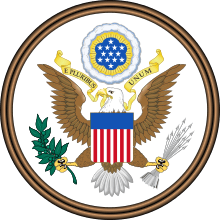Dia
DIA or Dia may refer to:
Government establishments
Organizations and businesses
Airports
Arts
Charity
Entertainment
Medicine

Dia (singer)
Dia (Hangul: 디아, stylized as DIA) (born June 12, 1992) is a South Korean singer and a member of the disbanded girl group Kiss&Cry
Career
Dia created a sketchbook called Dia's Sketchbook, in which she places videos of her singing covers of other people's songs. Dia has collaborated with many artist including IU, The Black, D'Nine, H-Eugene, PD Blue, and such.
She was a member of girl group Kiss & Cry, which released one single and then disbanded (although their company claims they are simply on hiatus, there is notably no mention of the group anywhere on the company's website).
Discography
Singles
Digital Mini-Albums
Albums
Collaboration digital singles
Variety Shows
Controversy
Dia was mistaken as a copier of 2NE1's Bom due to her similar appearance and vocal ability. Dia felt hurt after many people critiqued that she was an imitator of Bom. She stated that she would like to meet Bom and thank her, she also stated she wants to show her own styles and capabilities.
Personal life

Dia (island)
Dia (Greek Δία ['ði.a]), also pronounced locally Ntia (Ντία ['di.a]), is an uninhabited island off the northern coast of the Greek island of Crete. The island is approximately 7 nautical miles north of Heraklion. Administratively, Dia is part of the community of Elaia within the municipal unit of Gouves, Heraklion regional unit, by the municipality of Elias.
History
The island was formerly known as Standia, and was the principal port of Crete for centuries.
Islet morphology
The islet looks like a giant lizard when viewed from the city of Heraklion. There is also a legend that a giant lizard tried to destroy the island of Crete, but Zeus turned it in to stone with a thunderbolt, thus creating the island.
Mythology
The island is visible from Crete's capital city of Heraklion, as it would have been in the time of the Minoan kingdom, from the capital of Knossos. Because of this, it was sometimes identified as the island that Theseus escaped to after killing the Minotaur.
Environmentally protected

Federal Food, Drug, and Cosmetic Act
The United States Federal Food, Drug, and Cosmetic Act (abbreviated as FFDCA, FDCA, or FD&C), is a set of laws passed by Congress in 1938 giving authority to the U.S. Food and Drug Administration (FDA) to oversee the safety of food, drugs, and cosmetics. A principal author of this law was Royal S. Copeland, a three-term U.S. Senator from New York. In 1968, the Electronic Product Radiation Control provisions were added to the FD&C. Also in that year the FDA formed the Drug Efficacy Study Implementation (DESI) to incorporate into FD&C regulations the recommendations from a National Academy of Sciences investigation of effectiveness of previously marketed drugs. The act has been amended many times, most recently to add requirements about bioterrorism preparations.
The introduction of this act was influenced by the death of more than 100 patients due to a sulfanilamide medication where diethylene glycol was used to dissolve the drug and make a liquid form. See Elixir Sulfanilamide disaster. It replaced the earlier Pure Food and Drug Act of 1906.
Photo Marketing Association
The Photo Marketing Association International (or PMA) International Convention and Trade Show is an annual imaging technology trade show conducted by PMA held in Las Vegas. Since 2012, the show has been branded as PMA@CES, reflecting its rescheduling to coincide with International CES, a major annual consumer electronics trade show also held in Las Vegas.
The PMA International Convention and Trade Show is frequently the occasion for the public introduction of important imaging products. The major competition for this trade show is Photokina, held in even-numbered years in Cologne, Germany.
In 2012, PMA announced it would launch an online community known as The Big Photo Show, with associated trade shows under that banner in the U.S. The first such show was held in Los Angeles in May 2013, with another scheduled for that city in May 2014. Unlike PMA@CES, which is restricted exclusively to trade visitors, The Big Photo Show is specifically intended for consumers.
PMA2020
Performance Monitoring and Accountability 2020 (PMA2020) is a household and facility survey for Family Planning and Water and Sanitation in Burkina Faso, DR Congo (Kinshasa), Ethiopia, Ghana, India (Uttar Pradesh and Bihar), Indonesia, Kenya, Niger, Nigeria, Pakistan, and Uganda. The first survey was conducted in 2013.
Surveys are conducted every six to twelve months and use mobile devices for low cost and rapid turnaround data collection.
New health modules may be added in the future, including questionnaires concerning maternal and newborn health.
See also
External Links
References
Podcasts:

